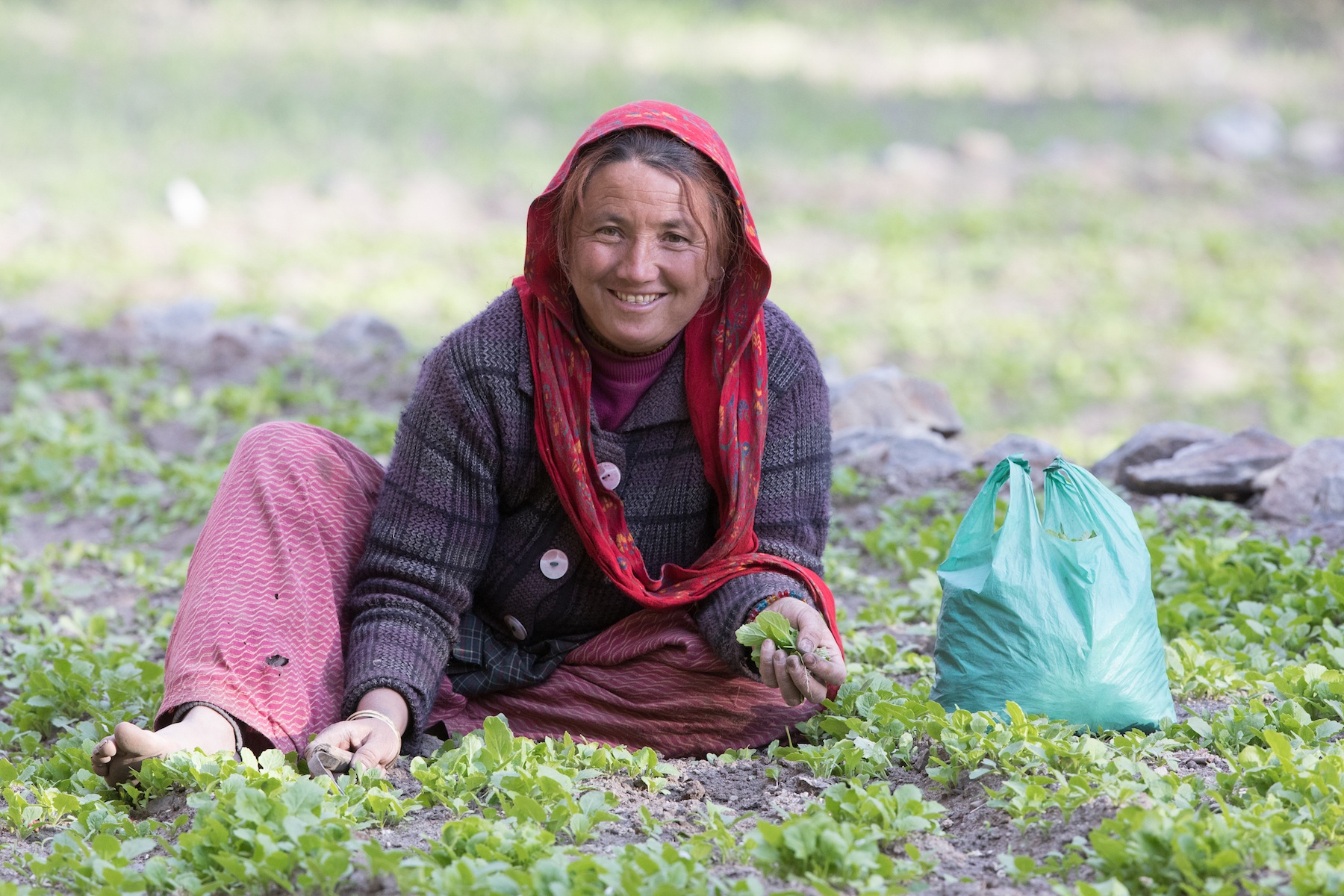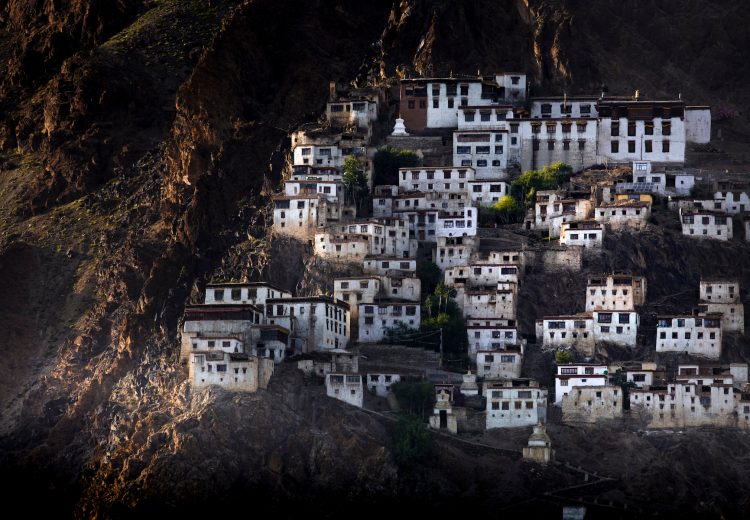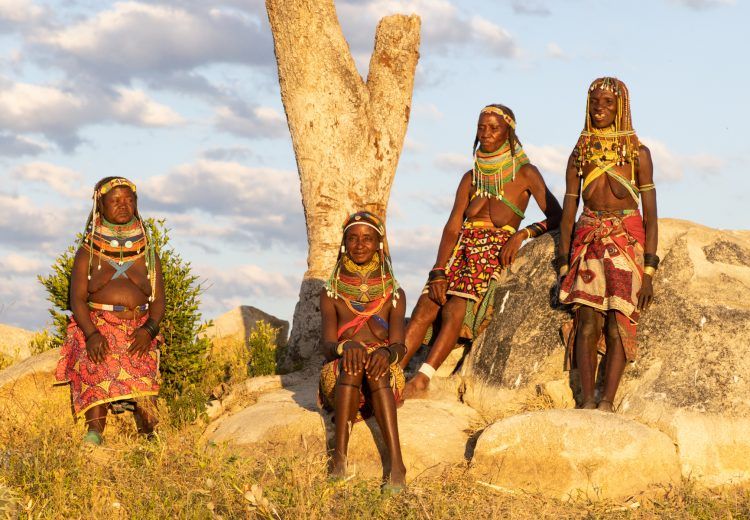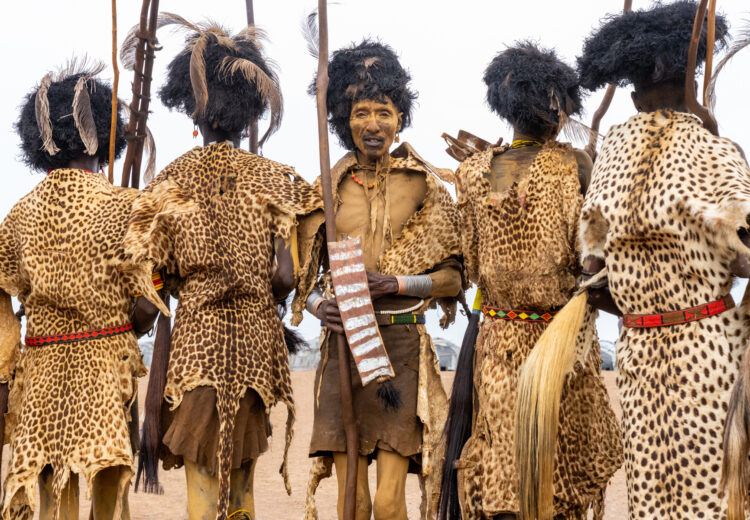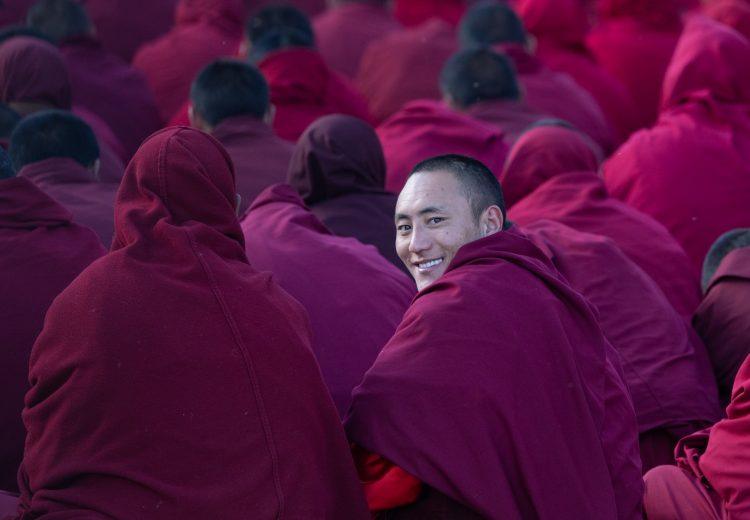India
PEOPLE OF LADAKH, INDIA: The spectacular, hidden tribal people of the Indian Himalaya





































































Woman wearing Perak in an ancient building of Takmachik (Image by Inger Vandyke)

Elderly Brokpa lady in traditional dress (Image by Inger Vandyke)

Beautiful Brokpa girls seem more European than Asian in appearance (Image by Inger Vandyke)

Changpa families live in large, well constructed tents as they herd their livestock across the high altitude plains of the Changthang (Image by Inger Vandyke)

Women wearing Perak in Takmachik (Image by Inger Vandyke)

The hands and shell bracelets of a lady wearing Perak in Takmachik village (Image by Inger Vandyke)

Inside a Changpa nomad tent in Ladakh (Image by Julie-Anne Davies)

Spinning wool is traditionally done by hand in Ladakh (Image by Inger Vandyke)

In the villages near Temisgam local nuns tend to young trees in the fields (Image by Inger Vandyke)

The slow drifting waters of the spectacular Indus River in northern India (Image by Inger Vandyke)

Women wearing Perak in a side street of Takmachik (Image by Inger Vandyke)

The breathtaking traditional dress of the Brokpa people in Dha Hanu (Image by Inger Vandyke)

Dolma spinning wool in Ulley (Image by Inger Vandyke)

The nomadic Changpa people prepare their ponies to move on to their next base (Image by Julie-Anne Davies)

The more commonplace dress of Tibi (bowler style hats) is also worn by women in Ladakh (Image by Inger Vandyke)

Late afternoon on Tso Moriri (Image by Inger Vandyke)

The kindness of Buddhist monks (Image by Inger Vandyke)

The incredible lined face of an elderly man in the Zanskar Valley of Ladakh (Image by Inger Vandyke)

Nomadic Changpa children are often dressed with numerous good luck tokens including images of the Dalai Lama and other Buddhist monks (Image by Inger Vandyke)

Portrait of a nomad girl on the Changthang (Image by Julie-Anne Davies)

A monk contemplates the morning prayer at Thiksey Monastery outside Leh (Image by Inger Vandyke)

Full Tibi dress on a Ladakhi lady in Temisgam (Image by Inger Vandyke)

A local seamstress lady in Takmachik (Image by Inger Vandyke)

Portrait of a Ladakhi woman wearing the beautiful Perak, or cobra's head dress (Image by Inger Vandyke)

Beautiful Tsering Dolma, a nomadic Changpa girl near Tso Moriri (Image by Inger Vandyke)

To keep their babies warm the Changpa will often swaddle them in animal skins and woollen blankets (Image by Inger Vandyke)

The heavy head dress of Brokpa women features metail chains, semi-precious stones and shells along with artificial flowers, braids and brocade (Image by Inger Vandyke)

The spectacular monastery of Lamayuru on a dramatic sunset (Image by Inger Vandyke)

The amazing hill fortress of Basgo in Ladakh (Image by Julie-Anne Davies)

Elderly Ladakhi lady wearing her Tibi and traditional robes at an archery festival (Image by Inger Vandyke)

Inside the shelter for a Changpa family, the atmosphere is cosy and warm (Image by Julie-Anne Davies)

View over the rooftops of Lamayuru village from the monastery's kora (prayer) circuit (Image by Inger Vandyke)

The gaze of Buddha at Thiksey (Image by Inger Vandyke)

A modern day wool shop for the knitters of Ladakh (Image by Inger Vandyke)

Beautiful reflections abound in the high altitude Tso Moriri lake of the Changthang (Image by Inger Vandyke)

The Brokpa women of Dha Hanu will probably be engaged in planting and harvesting the first turnips of spring during our tour (Image by Inger Vandyke)

A lady wearing Perak in Takmachik holds a polaroid image of herself in traditional dress (Image by Inger Vandyke)

The multitude of chortens at Shey, once the former capital of Ladakh, near Leh (Image by Inger Vandyke)

Components of the beautiful Perak traditional dress are laid out on a local carpet in preparation for our photography session (Image by Inger Vandyke)

Ladakhi women stand in the kitchen of an ancient home in Takmachik (Image by Julie-Anne Davies)

Ladakhi lady wearing Tibi in an ancient building of Temisgam (Image by Inger Vandyke)

Brokpa people are sometimes called The Flower People of Ladakh (Image by Inger Vandyke)

The ceremonial headdresses, or Tepis, of the Dardic Brokpa people in Ladakh (Image by Julie-Anne Davies)

A herd of Siberian Ibex on the run near Ulley village (Image by Inger Vandyke)

Perak detail (Image by Inger Vandyke)

The Changpa nomadic women often carry their children on their back while they shepherd their stock (Image by Inger Vandyke)

Ladakh is home to so much beautiful mountain scenery (Image by Inger Vandyke)

Explore the ancient petroglyphs of the Indus Valley at Dhomkar on our Zanskar photography tour (Image by Inger Vandyke)

Many of the high mountains surrounding Tso Moriri are unnamed, unclimbed and wildly beautiful (Image by Inger Vandyke)

Elderly Ladakhi woman rescuing a young baby sheep near Takmachik village (Image by Inger Vandyke)

Hand made Pabus or moccasins worn as part of traditional Ladakhi dress (Image by Inger Vandyke)

Tingmosgang monastery is nestled deep in the hills above Temisgam village (Image by Inger Vandyke)

A young monk practices his prayers at Lamayuru (Image by Inger Vandyke)

Thiksey monastery at dawn (Image by Inger Vandyke)

Elderly Brokpa lady in Dha Hanu (Image by Inger Vandyke)

The breathtaking high altitude scenery of the Changthang (Image by Inger Vandyke)

Wool shop owner on the road between Leh and the Changthang (Image by Inger Vandyke)

One of the young monks at puja in Thiksey monastery near Leh (Image by Inger Vandyke)

The beautiful and hidden Brokpa villages of the Indus Valley (Image by Inger Vandyke)

At the markets in Leh, stalls selling organic seeds are set up with the assistance of the Women's Alliance (Image by Inger Vandyke)

Brightly coloured mani stones near the shore of Tso Moriri (Image by Inger Vandyke)

The head monk of Lamayuru is always a welcoming host to visitors (Image by Inger Vandyke)

Going home from school. Young monks make their way back to their accommodation after prayers (Image by Inger Vandyke)

The otherworldly, moonscape eroded land forms that signal you are getting close to Lamayuru (Image by Inger Vandyke)

An elderly lady in prayer at Tingmosgang monastery near Temisgam (Image by Inger Vandyke)

Portrait of a beautiful Brokpa girl in Dha Hanu village (Image by Inger Vandyke)

The beautiful Perak is quite heavy to wear due to the numerous semi precious stones it is adorned with (Image by Julie-Anne Davies)
|
Friday 25th April –
Wednesday 7th May 2025 Leaders: Julie-Anne Davies and a local guide |
13 Days | Group Size Limit 5 |
INDIA: PEOPLE OF LADAKH PHOTOGRAPHY TOURS WITH WILD IMAGES
Hidden deep in the foothills of the Indian Himalaya, Ladakh is home to some of India’s most gentle and beautiful cultures.
Ladakh has long been more than just a state in India. Geographically it is an extension of the Mount Kailash region of Central Tibet, and its ethnography is firmly centred around Tibetan languages, culture, traditions and history. Sitting next to the borders of Pakistan and China, Ladakh also has people whose beliefs are centred around Islam and ancient, animist-influenced Bon and Vajrayana Buddhism.
Sprinkled around this incredible landscape are some of the oldest Tibetan Buddhist monasteries in the world. Many are perched high on hillsides, almost clinging to the heavens. Each day, these active monasteries host warm prayer sessions that begin with monks of both the Yellow Hat and Red Hat orders, blowing their massive Dung Chen horns to summon the faithful to pray. Once inside, we may sit quietly, watching and photographing the monks as they engage in ritualistic chanting and scripture reading while massaging strings of prayer beads through their fingers or sipping cups of yak butter tea served by novice monks.
In the face of our fast-tracked, modernising world, many people in Ladakh cling to a rich tapestry of traditional cultures, ceremonies and languages, which are principally carried through generations by Ladakhi women.
Some of these women undertake extraordinary journeys on foot to visit some of Ladakh’s most isolated hamlets and villages. On these journeys, they assist local women with the setup of composting toilets, deliver organic seed stock, help to develop small business skills, and sometimes they enjoy a shared cup of tea with some women who live without electricity or free-flowing water in their homes.
Our Women of Ladakh tour is the first and only tour of its kind that intimately explores the cultural beauty of Ladakh while supporting the women leaders of the communities we visit through donations. Handed to the village matriarch, these donations help Ladakhi people to sustainably develop communities through organic agriculture, water infrastructure and waste management while fostering respect for the ethical and spiritual values on which Ladakhi cultures are based.
Traditional Ladakhi Dress
The traditional dress of Ladakh features an elaborate combination of semi-precious stones, animal furs, hand turned metal ornaments, sea shells, home spun wool and brocades. Ladakhi men wear a thick woollen Goncha with knee high boots and a top cap. The women’s dress is called a Perak and consists of a spectacular hat of black lambskin that is dotted with semi precious stones and is shaped like a cobra’s head which tapers to a point at the back. The elaborate decoration of a Perak is associated with the stature of the woman who is wearing it and more adornment symbolises higher stature. Traditionally, the number of front-to-back rows of turquoise signified the status of the wearer: nine rows for the queen of Leh, seven rows for the more modern aristocracy, five for the marvels, and three for the lower ranks. The jewels themselves are representative of the Ladakh deities, protecting and guiding the wearer through the dangerous human world. While once a commonplace form of dress, in modern Ladakhi society, the tradition of donning a Perak is now restricted to traditional weddings and special events. It is possible now to find more women wearing the less elaborate Tibi (or tiny bowler style hats), however, this too is a diminishing form of dress.
The Brokpa
Ladakh’s dardic Brokpa, or Flower People, live in one of the few fertile valleys of this arid region inside Jammu and Kashmir. The Brokpas are completely different– physically, culturally, linguistically and socially – from the Tibeto-Burman inhabitants of most of Ladakh. For centuries, the Brokpas have been indulging in public kissing and wife-swapping without inhibitions. Their cultural exuberance is reflected in exquisite dresses and ornaments. Brokpa men wear a large woollen dress held at the waist over woollen trousers. The women don special woollen dresses and adorn themselves with shells, beads and silver jewellery. Goatskin capes complete the traditional dress. Both men and women wear unusual headdresses decorated with flowers, coins and seashells. According to popular belief, the Brokpas were part of the army of Alexander the Great and came to the region over two thousand years ago. The Brokpas reside in a total of five villages; however, tourists are allowed only in two of these – Dha and Hanu. Besides tourists, the villages also attract anthropologists and very small numbers of photographers. Aside from extremely small scale tourism their main source of income is through the sale of products from their well-tended vegetable gardens. The custom of marrying within the community has ensured the Brokpas have retained their distinctive high cheekbones, aquiline noses, fair complexions and pale eyes. It has, however, limited the population of Brokpas, and the community hardly numbers over 2000.
The Mountain Women of Ladakh
The Women of Ladakh tour takes place at a beautiful time of the apricot blossoms. Travelling throughout this region at the end of winter, it is possible that you will meet women as they tend to their fields at the start of spring, planting new trees, sewing new seed and ploughing. You will stay one night at a very traditional homestay which forms a part of the Himalayan Homestay Program that is designed to provide families living in isolated regions of Ladakh with a form of supplementary income during the winter. Nestled in a beautiful remote valley, you will join in the serving of yak butter tea while communing with a traditional family of Ladakhis who have lived in this home for more than 200 years.
The tour will start and end at the Grand Dragon hotel in Leh. In between we will be living alongside the women of Ladakh in several small villages and our accommodation will vary from basic home stays to guest houses.
The trip will involve light trekking and transport by vehicle into some of the most fascinating ethnic corners of Ladakh where we will meet women from rural Ladakh, the Brokpa tribal women, nomadic Changpa herders, distance school children at a boarding school in Leh and Tibetan Refugees. During our encounters we will have the time and opportunity to do photography, play with children, learn crafts, agriculture, and hear the stories of women across Ladakh.
Chang Pa Nomads
The nomadic Chang Pa people of Ladakh’s high altitude lakes are a gazetted group of tribal people in India who reside in the extremely remote Changthang region, near the border of India and Tibet.
As some of the most isolated people in India, the Chang Pa nomads reside in traditional tents that they can move easily with their small livestock holdings when different regions become fertile enough to graze stock. They are traditional Ladakhi people, yet they physically resemble many of the nomadic people in western Tibet. Their tent homes, at first glance, appear to be quite basic, yet they are incredibly well insulated and warm enough to withstand the bitterly cold winters of the Changthang.
The Changthang is not only the traditional home of the Chang Pa, it also features the spectacular lakes of Tso Moriri (India’s largest Himalayan lake) and Tso Kar. This wild, isolated region of India is home to diverse wildlife and it is here we may see our first Kiangs (or Tibetan wild asses), Hares, Cranes and other birds. Both of these lakes sit at an altitude of around 4,500m or 14,800ft and they are surrounded by peaks up to 6500m in height.
The Monasteries of Ladakh
While the primary focus of this tour is photographing the women of Ladakh, we will also visit the stunning, hidden monastery town of Lamayuru and we will join the monks of Thiksey monastery in Leh for puja, or early morning prayers. Communing with novice monks in Ladakh is a joy and we will have the opportunity to watch them engage in their morning chants as they go through their journey to learn more about Buddhism. At each monastery we will spend time gazing at intricate murals, ancient Buddhist texts and walking the kora, or prayer circuit, to do photography.
Traces of Ladakh’s Ancient Past
Strewn around the Indus River banks and hillsides of Ladakh are ancient petroglyphs and paintings that tell the stories of this region’s ancient past. We will visit these ancient engravings at Dom Khar and also stop to visit a gigantic mountain mural painted by Tibetan Buddhist Monks en-route to the Changthang.
From the spectacular traditional Perak headdress and the intricately stunning traditionally dressed Brokpa women to the more simple, yet beautiful handmade clothes of the high altitude Changpa nomadic women, our tour is a wondrous photographic odyssey that visits traditional villages, nomadic tented camps and heavenly Buddhist monasteries.
Accommodation & Road Transport
All the accommodation is of a good standard. In Leh, we will enjoy the comforts of a comfortable tourist class hotel. In smaller villages of Ladakh, the accommodation can range from basic homestays with pit toilets that are shared, to basic guest houses and hotels. In the remote Changthang one night will be spent camping in warm tents with comfortable mattresses and linen with warm food and shared bathroom facilities. Road transport is by air-conditioned minibus.
Walking
The walking effort is easy throughout.
Climate
The tour will take place at the end of the Ladakhi winter and temperatures will range from sub-zero in the late afternoon and night to between 0C and 10C during the day.
Portrait and Travel Photography
Photographic Equipment
The Women of Ladakh tour focuses mainly on travel, landscape and portrait photography. If you are a DSLR photographer, we suggest you bring a wide angle lens and also a travel lens similar to the Canon 24-105 or 70-200 with you. Non DSLR photographers will also benefit a lot from this tour and you will be able to capture lovely images using a good quality bridge camera or even a cell phone in some instances.
Opportunities for wildlife photography will be limited but you may wish to bring a larger zoom lens in the event we see a herd of Kiangs in the high altitude lakes or mountain creatures such as Urial, Blue Sheep or Siberian Ibex.
Photographic Highlights
- A comprehensive exploration of the rich tapestry of cultures in Ladakh
- Private photography shoots with traditionally dressed Ladakhi people in villages
- Numerous opportunities to photograph the stunning Indian Himalaya from traditional monasteries perched on hilltops
- Join in the celebration of puja, or early morning prayer, at Thiksey monastery near Leh
- Commune with the novice monks of Lamayuru, a monastery hidden in a deep and spectacular eroded valley
- Our tour takes place at the start of Apricot blossom season, a time of great celebration for Ladakhi people as it heralds the start of spring
- Visit colourful local markets that are bustling centres of trade in agricultural and traditional products
- Photograph traditional Chang Pa nomads in their tented camps, while learning about their daily lives herding livestock in the spectacular Changthang region of Ladakh, near the border of China.
- A chance to visit the hidden communities of Ladakh's Dardic Brokpa people who claim to be the last of the Aryans and whose culture spans both India and neighbouring Pakistan
- Support Ladakhi women to maintain their traditional cultures while sustainably developing their communities, by donation
OUTLINE ITINERARY
- Day 1: Arrive in Leh and rest to acclimatise
- Day 2: We will visit the spectacular monastery of Thiksey (sometimes known as the "Little Potala") for morning prayer before travelling to a traditional Ladakhi village hidden deep in the mountains
- Day 3: A slow exploration of a spectacular Himalayan valley as we visit the historic Tingmosgang monastery and traditional villages on the way to Temisgam
- Day 4: Early morning photography with Ladakhi women wearing Perak and Tibi, before a beautiful drive to the remote Lamayuru Monastery, arriving in time for sunset in the mountains
- Day 5: A full day exploring Lamayuru, starting with sunrise and puja with the monks and then visiting traditional Ladakhi homes nearby
- Day 6: After a final Lamayuru sunrise, we will drive along the Indus River to the Brokpa villages of Dha Hanu
- Day 7: Full day of photography with the Brokpa people
- Day 8: We will leave the Brokpa area and visit some ancient Indus Valley petroglyphs en-route to the sustainable village of Takmachik arriving in time to photograph the line of chortens at sunset
- Day 9: Photograph traditionally dressed people of Takmachik in one of the region's oldest houses and the apricot harvest, before returning to Leh overnight
- Day 10: Depart for the remote Chang Thang region of Ladakh, home to nomadic Chang Pa people, stopping at rock paintings and visiting nomad camps
- Day 11: A full day visiting the nomadic camps of Chang Pa people
- Day 12: A slow return to Leh stopping for photography en-route before a final dinner to celebrate our tour
- Day 13: Tour finishes after breakfast
To see a larger map, click on the square-like ‘enlarge’ icon in the upper right of the map box.
To see (or hide) the ‘map legend’, click on the icon with an arrow in the upper left of the map box.
To change to a satellite view, which is great for seeing the physical terrain (and for seeing really fine details by repetitive use of the + button), click on the square ‘map view’ icon in the lower left corner of the ‘map legend’.
PRICE INFORMATION
Wild Images Inclusions: Our tour prices include surface transportation, accommodations, meals and entrance fees.
Our tour prices also include all tips for local guides, drivers and accommodation/restaurant staff. We also include payments to local people who are willing to be photographed.
Our tour prices also include a donation of US$300 per participant to a local NGO in Leh who assist women living in isolated rural areas across Ladakh.
Deposit: 20% of the total tour price. Our office will let you know what deposit amount is due, in order to confirm your booking, following receipt of your online booking form.
TO BOOK THIS TOUR: Click here (you will need the tour dates)
2025: provisional £4480, $5790, €5260, AUD8740. Leh/Leh.
Single Supplement: 2025: £250, $330, €300, AUD490.
If you are travelling alone, the single supplement will not apply if you are willing to share a room and there is a room-mate of the same sex available.
This tour is priced in US Dollars. Amounts shown in other currencies are indicative.
Air Travel To & From The Tour: Our in-house IATA ticket agency will be pleased to arrange your air travel on request, or you may arrange this yourself if you prefer.
INDIA: PEOPLE OF LADAKH PHOTOGRAPHY TOUR: DETAILED ITINERARY
People of Ladakh Photography Tour Day 1
The first day of the tour is our arrival day in to Leh. Given the high altitude of Leh, we suggest that guests spend as much of the arrival day as possible resting and acclimatising to the mountains. Overnight will be at a comfortable tourist class hotel in Leh.
People of Ladakh Photography Tour Day 2
This morning we will rise early to enjoy puja (or early morning prayer) at the incredible monastery of Thiksey. We will try to arrive early enough to see the young monks singing to announce the start of prayer and assembling in the prayer hall. We will also spend a short time exploring the monastery, including a brief visit to the rooftop which enjoys an incredible view of the Indus Valley.
From Thiksey we will depart Leh and travel the spectacular route to the tiny mountain hamlet of Ulley. We will stop to enjoy tea and snacks for lunch at Nimoo and make stops to look at the remarkable confluence of the Indus and Shyok rivers, the ancient castle of Basgo and also, if time allows, to take photos of the mountain scenery on the winding road that leads to Ulley. Once we arrive at Ulley in the late afternoon, we will check in to a local homestay owned by Dolma and Norboo. This simple, yet warm and clean, homestay will be our first insight into rural Ladakhi life. Dolma and Norboo’s home is also a small farm that has chickens, goats, Tso (cross bred cattle with yak) and sheep. From this small holding Dolma produces her own wool, she grows apricots and apples and she milks Tso each day. Their homestay operates as a guest house for Snow Leopard spotters during the winter and trekkers during the summer. In between they rely on the products of their farm to make a living and Dolma also makes lovely small wool Snow Leopards which she sells to raise funds for Snow Leopard conservation.
People of Ladakh Photography Tour Day 3
After a morning walk around the mountain trails of Ulley where we might see a variety of birds and wildlife, we will leave Ulley for the tiny village of Temisgam. Situation at the base of the spectacular Tingmosgang Monastery, Temisgam is at the end of a small valley dotted with tiny traditional Ladakhi villages. After arriving at Temisgam we will visit Tingmosgang Monastery and then take a drive into a nearby valley hoping to see women or local nuns working in the fields at the start of spring. There are numerous opportunities here to also stop and photograph Tingmosgang from a distance so if the sunset is going to be spectacular, we will find a place to catch the last of the setting sun over this ancient monastery. Our accommodation will be at a local guest house.
People of Ladakh Photography Tour Day 4
Today we will enjoy the first formal photography session of Ladakhi women wearing both the elaborate Perak and the more commonplace Tibi style dress of their culture. We will utilise one of the older charismatic buildings of the village for this photoshoot. It is three stories high and features traditional wooden windows, small doorways and a collection of ethnic rugs, furniture and crockery.
After the morning shoot, we will leave Temisgam for the incredible drive to Lamayuru. The road into Lamayuru meanders its way through a ‘clay forest’ of eroded landscapes that resemble a moonscape. Suddenly we will arrive at Lamayuru, hidden deep within one of these eroded valleys. We will spend the remaining hours here exploring the tiny village of Lamayuru before we return to our small hotel to watch the sunset over the monastery.
People of Ladakh Photography Tour Day 5
We will enjoy a full day at Lamayuru starting with a sunrise landscape photography session to catch the first light over the village. From there we will visit the monastery and do a kora (prayer circuit) around it to spin prayer wheels and do photography. The monastery of Lamayuru is an incredible destination for photography. It crowns the village from its high perch and from the kora you can look over the rooftops of the local houses, observing their basic clay structure, the livestock and lives of Ladakhi families as they have lived for centuries. We will stop for lunch at a local guest house with a communal kitchen where you may see Ladakhi women making traditional noodles and dumplings for lunch.
People of Ladakh Photography Tour Day 6
After a final sunrise photography session at Lamayuru, we will descend out of the mountains and drive along the Indus river to the remote villages of Dha and Hanu, the home of the incredible Aryan Brokpa people of the Indus Valley. We will check in to our hotel beside the river and spend our first afternoon exploring these two villages with their sophisticated agriculture, food storage, aqueducts and architecture. For centuries, the Brokpa people lived in these tiny villages, hidden away on the hillside and they developed a way of life that is quite elaborate in comparison to other ethnic communities across Ladakh. We will spend some time with the people of these villages, while our leaders will organise a photography session of the Brokpa for the following day.
People of Ladakh Photography Tour Day 7
We will return to Dha Hanu for a formal photography shoot of Brokpa women in their traditional dress. This ancient culture is sometimes called “The Flower People of Ladakh” and the costumes worn by the Brokpa people for special ceremonies feature flowers, metal jewellery, cowrie shells, animal furs, semi-precious stones and brass rings. It is incredibly beautiful and intricate attire to photograph. After a morning photography session we will return to our local hotel for lunch and a rest before exploring the Dha Hanu villages again in the afternoon for photography.
People of Ladakh Photography Tour Day 8
Today we leave Dha Hanu and drive back along the Indus Valley, stopping at some ancient petroglyphs on the way to Takmachik. The tiny village of Takmachik sits on a hillside overlooking the Indus and from here we will take a walk around the village to photograph local people. If time allows we will also village a beautiful line of chortens that adorn the gateway to the village for sunset. We will stay overnight at a local homestay.
People of Ladakh Photography Tour Day 9
This morning our final formal photography shoot for women in Perak will take place in and around Takmachik village and we will enjoy a morning doing photography around the main village street and side streets. After some refreshments we will make our way slowly back to Leh where we will enjoy a night at a hotel before the next leg of our journey to the high altitude lakes of Ladakh.
People of Ladakh Photography Tour Days 10 and 11
After an early breakfast we will once again leave Leh and embark on the long drive into the high altitude region of the Changthang, near the border of India and Tibet. We will spend two nights in this spectacular region searching for and photographing the Changpa nomadic people. Based at a simple homestay we will drive around the roads between two spectacular lakes – Tso Moriri and Tso Kar, searching for nomadic families and photographing the stunning landscapes of the Changthang which features prayer sites, snow capped peaks and lake scenery. When we find the Changpa we will spend time with them learning about their lives through our translator on the tour and photograph their world of herding and camps in this beautiful region.
People of Ladakh Photography Tour Day 12
This is a travel day from the Changthang back to Leh where we will enjoy a final dinner at our hotel to celebrate our tour.
People of Ladakh Photography Tour Day 13
Our tour finishes with breakfast in Leh and transfer to Leh airport.
Other Wild Images Tours for People Photography
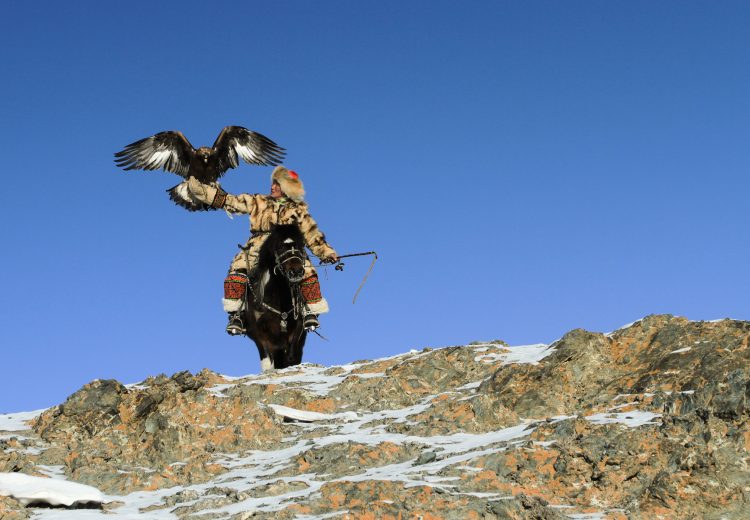
Mongolia
September 2024
EAGLE HUNTERS OF WESTERN MONGOLIA: Including the Altai Kazakh Eagle Festival at Sagsai
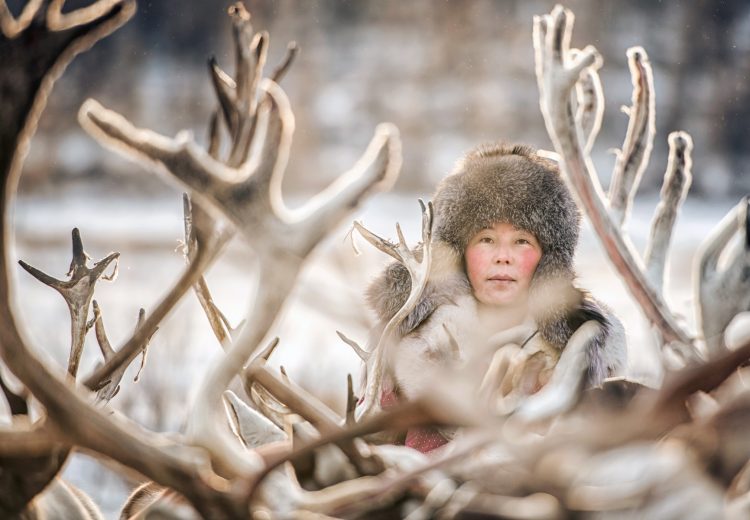
Mongolia
September-October 2024




































